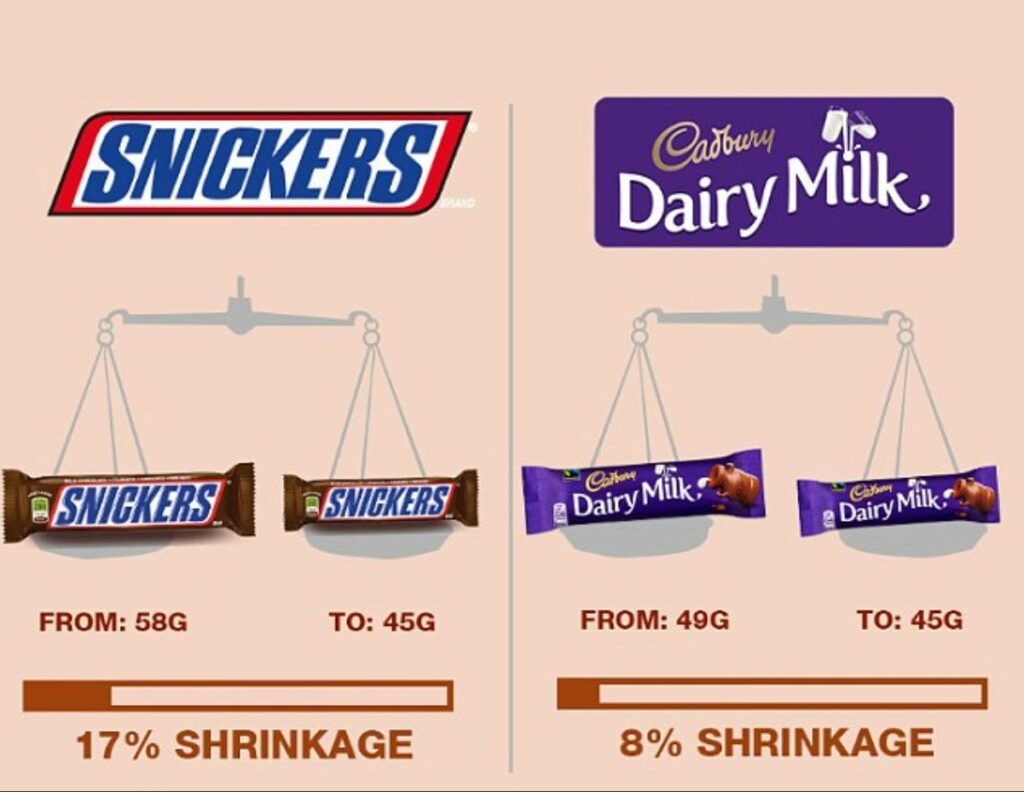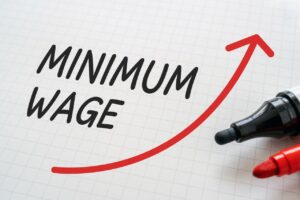If you’re a regular at your neighbourhood restaurant, you usually get used to paying the same prices for your meal. The same goes for grocery store products. So, except regular vs. sale prices, you’re accustomed to paying consistent prices for your groceries.
If prices go up, people notice. Sometimes restaurants even send a public communication notifying clients of a price increase to protect their reputation and maintain transparency. Nobody likes to pay more when they’re used to paying less – inflation causes changes in consumer behaviour, as well as a decline in economic growth.
Are you experiencing financial trouble due to Covid-19? See how a free credit counselling session can help.
Inflation causes prices for goods and services to go up and/or for the value of a currency to go down. An increased supply of money often causes inflation since a larger supply deems the currency less valuable. Sometimes, businesses have no choice but to increase their prices, even to their customers’ dismay.
What can businesses and companies do during inflation to maintain their profits AND keep their customers happy? Many adopt shrinkflation—but it’s not necessarily a good thing.
What is shrinkflation?
Coined by British economist Pippa Malmgren, the term “shrinkflation” is the practice of maintaining a consumer product’s sticker price while reducing the size or quantity of that product. Many businesses, especially in the food industry, adopt shrinkflation as a strategy to combat rising costs.
While customers quickly notice a shift in prices, they’re less likely to notice a small quantity reduction. For example, you’re more likely to notice your toilet paper going up in price by $2 than to notice your usual pack is missing three rolls.

Since a smaller quantity of a product has a higher-quantity price, inflation is still present, though hidden. So, for example, you might find a pack of steaks at the grocery store for the same price you’re used to, but with reduced weight, like 50 grams less of meat.
Funny enough, some businesses found creative ways to market shrinkflation as a positive. Food products that are smaller in size are considered “healthier” since they have fewer calories. Meanwhile, a product with a smaller package size is better for the environment since it is likely to produce less food waste.
What causes shrinkflation?
Two things cause shrinkflation: increased production costs and increased competition.
An increase in production costs is the main driver of shrinkflation. This includes an increase in the cost of raw materials and goods, energy commodities, and labour costs. All of these increases contribute to a decrease in a producer’s or retailer’s profit margins.
A sharp increase in competition also causes shrinkflation. Consumers look for the best price possible in a competitive market, so companies must meet their increasing expectations. Thus, shrinkflation helps companies avoid increasing prices to keep consumers happy.
How is shrinkflation impacting the consumers?
In the beginning, shrinkflation doesn’t impact consumers much at all. That’s because consumers are 4 times more likely to notice a price increase than a product size decrease.
Consumerworld.org founder Edward Dworsky says customers are paying more for household staples, but those increases don’t appear on receipts. Instead, they pay by purchasing a product with reduced weight or quantity.
After a while, consumers will need to allot more money for certain things, such as their food budget, than usual. This leaves them with less money for other things.
Consumer advocates also note that consumers will go through food quicker than usual, and they’ll be forced to shop more. Or, they might change their shopping behaviour completely and seek better deals on a product from competitors to their local grocery store.
Some grocery stores take action against shrinkflation by providing customers with the unit price of a product. This helps us better compare prices. For example, the unit price of a $5, two-litre bottle of orange juice is $2.50 per litre, while the unit price of a $1, 500-ml-bottle is $2 per litre.
How is COVID-19 feeding shrinkflation?
COVID-19 forced the Canadian government to support its citizens with wage subsidies and benefits, increasing the national debt. It also disrupted the supply chain for countless goods and raw materials like wood, steel, copper, and corn. Furthermore, a shortage of shipping containers slowed down the transport of goods and increased the prices for those goods.
The pandemic increased prices for materials like epoxy resin by 60%, which is a necessary ingredient for paint. With rising costs in paints, the automotive and home improvement industries faced increased prices in their production costs, forcing them to either inflate their prices or shrink their products and services.
So, the shortage or price increase for one product has a domino effect on the consumer. An increase in price for a raw material increases production costs for a supplier, which increases wholesale costs for a retailer, which increases retail price (or shrinks package size) for a consumer.
Examples of shrinkflation
Many companies outright communicated shrinkflation in their products due to the pandemic. Here are a few examples:
Mondelez International – Toblerone and Oreo Cookies
Famously, Mondelez International changed the shape of its Toblerone chocolate bars by introducing large gaps between the triangular pieces. This reduced the bar from 400g to 170g while keeping the packaging a similar size. More recently, their Oreo cookie packages shrunk by about 3 whole cookies from 303g to 270g. In both scenarios, the company cited rising commodity prices as a major reason.”
Nutella
Nutella publicly voiced that they would reduce their products’ package size while maintaining the same price because of rising costs.
General Mills
General Mills warned consumers of vague pricing actions due to inflation, without specifying exact actions. But, people have noticed the company’s cereal boxes are smaller these days, despite an unaltered sticker price.
Conclusion
Shrinkflation helps businesses and supplies deal with rising costs with minimum effect on their profit margins. But, shrinkflation simply passes those costs onto the consumer, which hurts their purchasing power over time. Have you noticed changes in your grocery bills? Has shrinkflation driven you into further debt? Talk to one of our credit counsellors today to learn about debt consolidation and debt relief options.
There are options for those with money troubles. We can guide you to take the best course of action.





